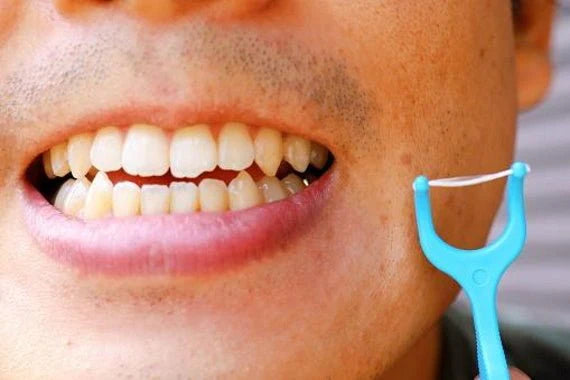Dental plaque is a normal phenomenon that affects everyone. It is unavoidable, but it can be prevented. Here are several ways to limit plaque.
Here are the main ways to limit the formation of plaque on your teeth:
Rules for brushing your teeth
1.Brush at least twice a day
You know you should, but how often? Ideally, you should brush after every meal to remove plaque as soon as it develops. It's especially important to brush your teeth at night before going to bed because without it, plaque stays on your teeth all night. Use a soft-bristled toothbrush. Hard bristles can be rough on your gums. Be sure to replace your toothbrush every 3-4 months. If it's too worn out, your brushing won't be the best.
2. Clean between your teeth
Your teeth aren't the only place where plaque forms. Plaque can also hide in the spaces between your teeth. So it's essential to clean between your teeth. It's important to know that brushing your teeth alone won't remove plaque from between your teeth. You should floss at least once a day. If wrapping floss around your fingers isn't for you, there are other equally effective options such as interdental brushes or hydropulps.
3. Mouthwash
Antibacterial mouthwash helps prevent plaque from forming. It also helps to dislodge it, making it easier to remove. But a mouthwash that is good for someone else may not be good for you. You should choose a mouthwash based on your needs. If you have gingivitis, sensitive teeth or a tendency to cavities, your mouthwash will need to be tailored. Some mouthwashes with alcohol can dry out your mouth. Ask your dentist which one is right for you.
You can try the Y-Brush toothbrush to brush your teeth. It removes 15% more plaque than a traditional toothbrush and brushes all the teeth and their faces at the same time.
Natural remedies
1) Baking soda
You can replace your toothpaste twice a week with baking soda. The preparation of this remedy is simple: you have to put some baking soda powder on your wet toothbrush and proceed with the usual brushing. It can also be used as a mouthwash but not more than once a week because it is abrasive. The double advantage of baking soda is that it helps to whiten your teeth without the need for teeth whitening.
2) Orange peels
They contain limonene. This is a substance that has the particularity to act on the dental plaque to limit its appearance. You can use preferably organic oranges and rub your teeth with the white side of the peel. You can also cut the white side of the orange peel into small pieces and mix them with a little water. Indeed, oranges are rich in vitamin C and have antimicrobial actions that will help you get rid of plaque and solidify your teeth.
3) Linden and sunflower seeds
The preparation of this remedy is simple: you need to mix 5 teaspoons of sunflower seeds and linden in the same amount. Then, you must put the whole thing in a saucepan on low heat. It is important to simmer the preparation for at least half an hour. Then you must wait for this solution to cool down and filter it to recover the juice. You can brush your teeth with this homemade preparation for 2 or 3 days if you keep it well refrigerated.
Treatments and adapted solutions
1) A healthy diet
The fact of consuming excessively sweet and acidic foods and drinks on a regular basis favors the proliferation of bacteria in the mouth as well as the formation of problems such as tooth decay. To have a healthy mouth, you must first think about adopting good eating habits. It is therefore important to consume fruits and vegetables that are good for your teeth. These vegetables should help you keep your teeth and gums healthy to avoid plaque formation.
Here are the types of foods you should eat:
- Antioxidants: carrots, tomatoes, peppers, red fruits and oranges.
- Foods that contain fluoride: fish, green tea and nuts.
- Dairy products: yogurt, cheese and cream.
2) Use of dental floss
It completes the brushing of the toothbrush which allows to reach only two thirds of the surface of our teeth. Daily flossing removes plaque and food residue from areas that the toothbrush cannot reach. You should choose a floss that fits your teeth and place it between each of your teeth. It is important to remember that you should floss for at least 2 minutes after each brushing.
3) Scaling and polishing at the dentist
The first step of scaling or cleaning is to remove plaque and tartar deposits. To do this, he usually uses an ultrasound device to remove most of the tartar and then all stubborn residue is removed with special hand instruments. The next step is to "polish" the teeth so that the surface is truly smooth. This corrects small imperfections and rough textured areas on the teeth to provide protection against further plaque build-up.
We hope this guide has helped you understand that regular brushing, in the right way and with the right mouthwash, will help you avoid plaque and tartar build-up. All natural remedies will help you avoid the formation or remove tartar from your teeth. All treatments and solutions are to be used in conjunction with the natural remedies.



